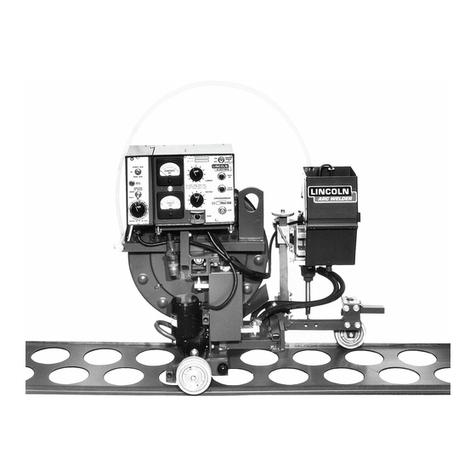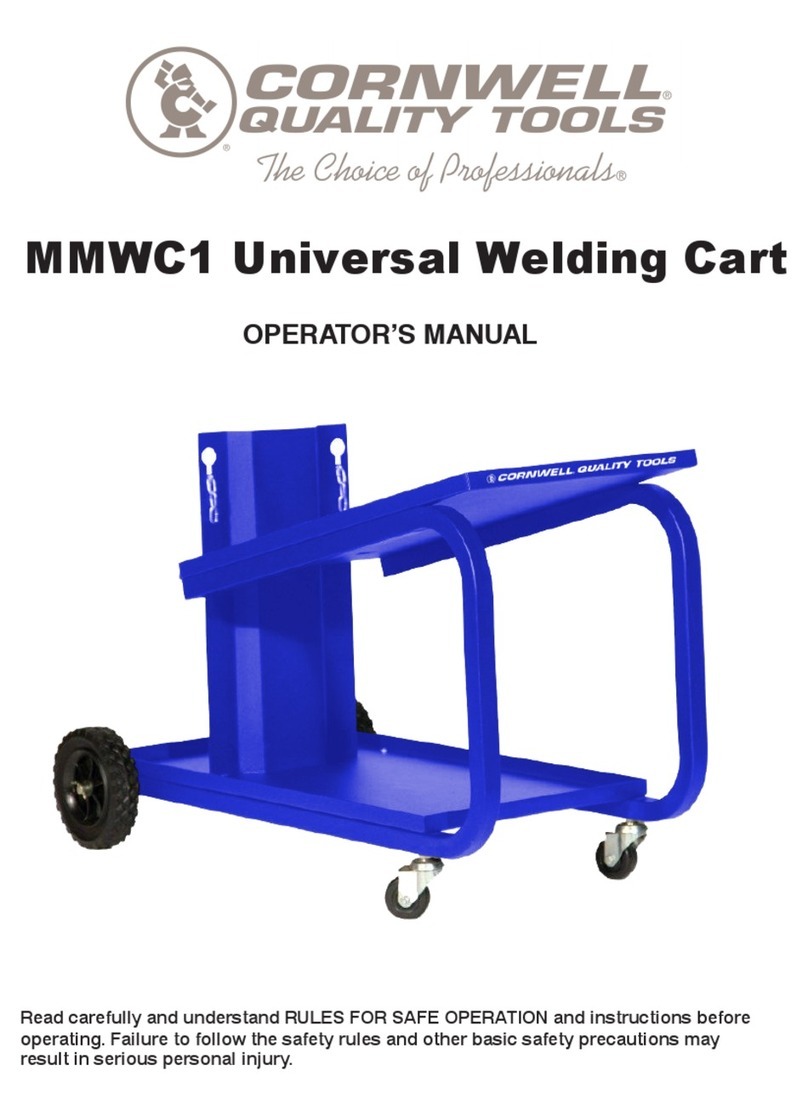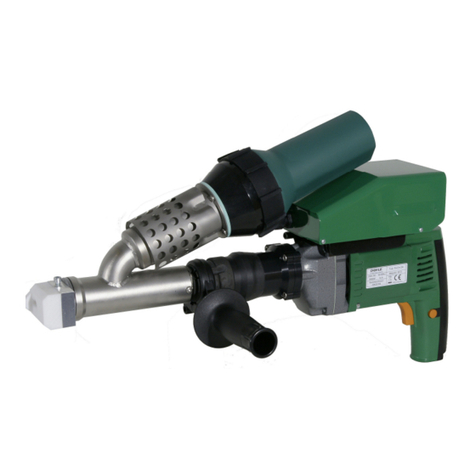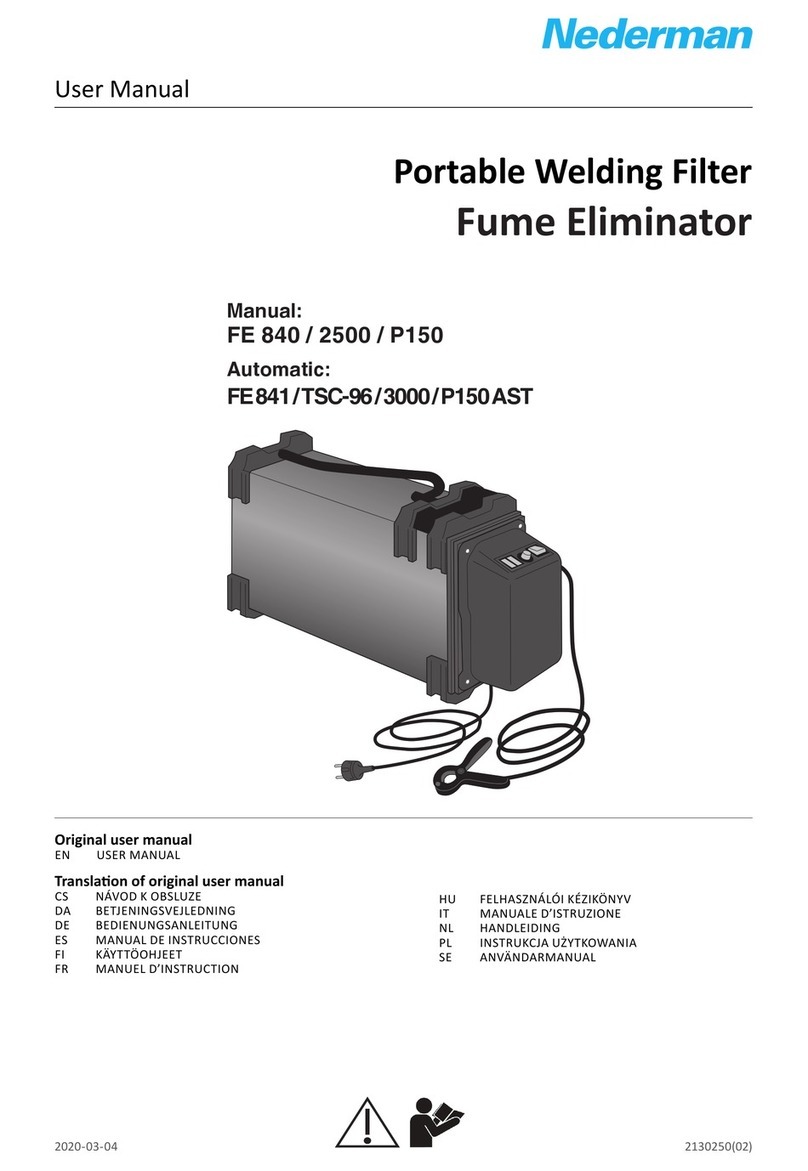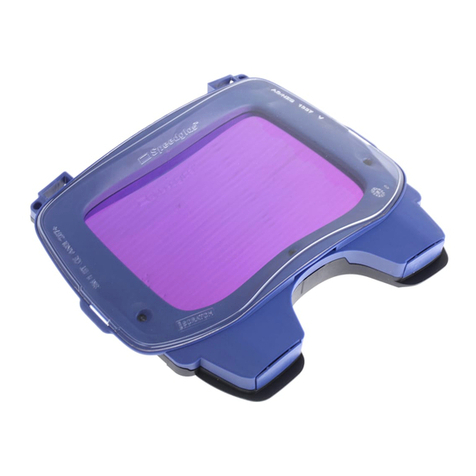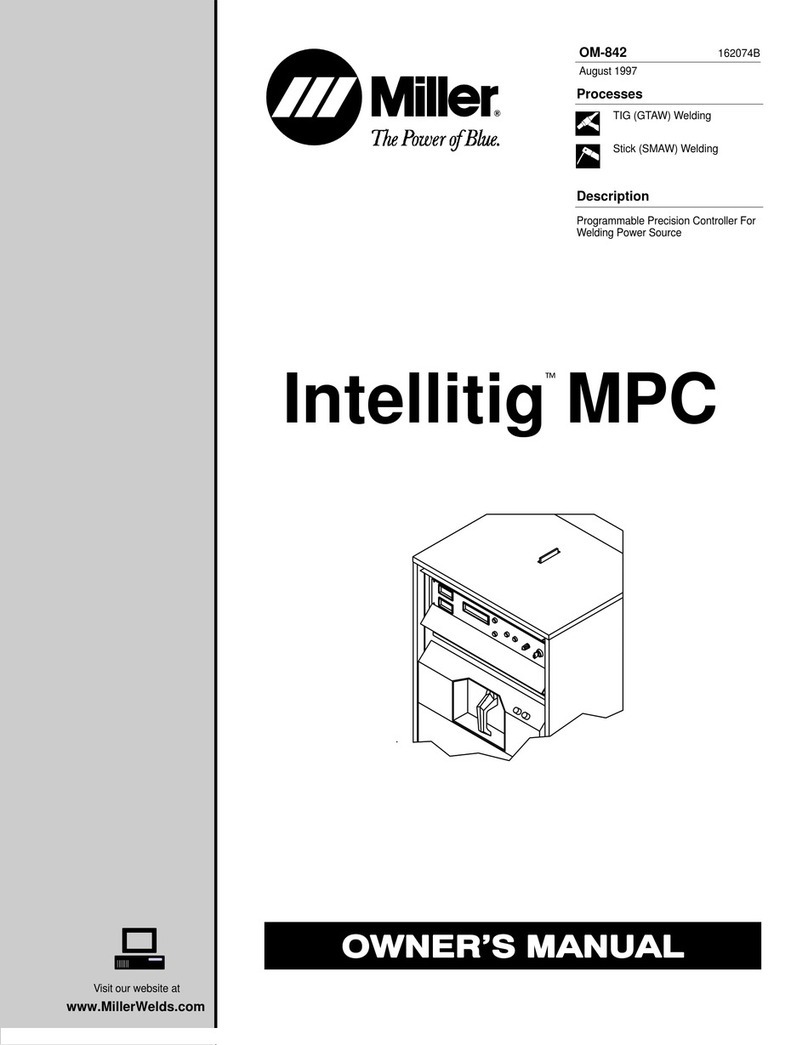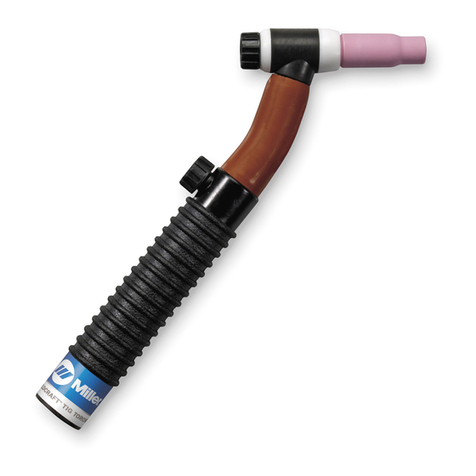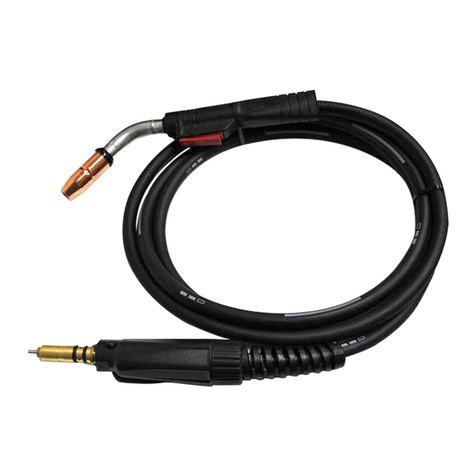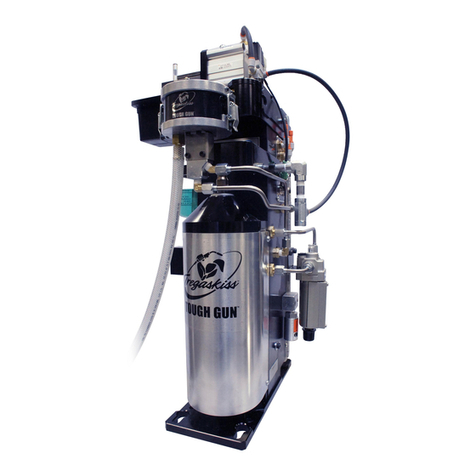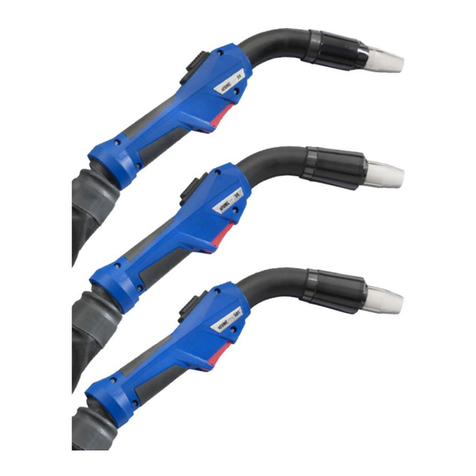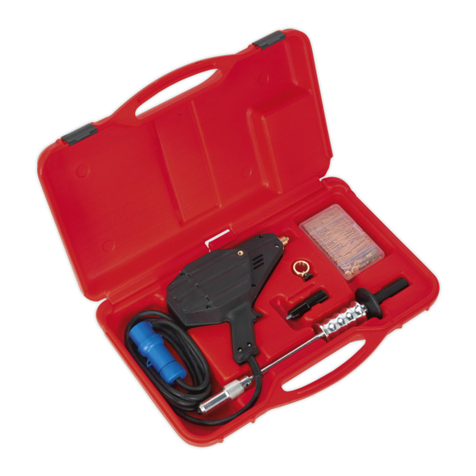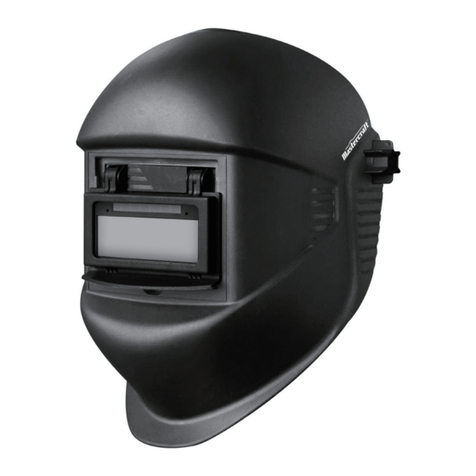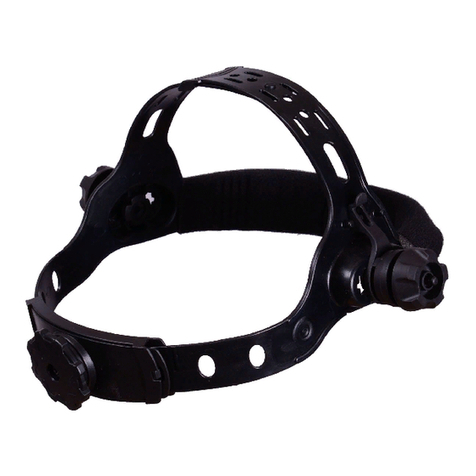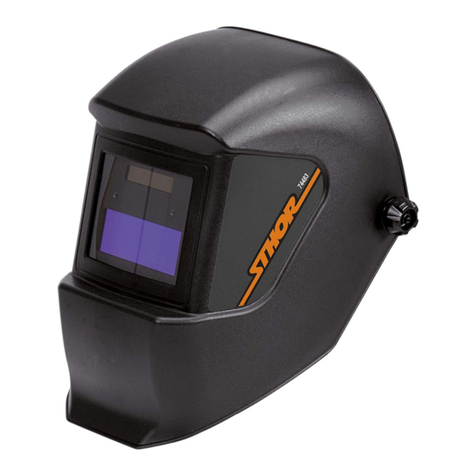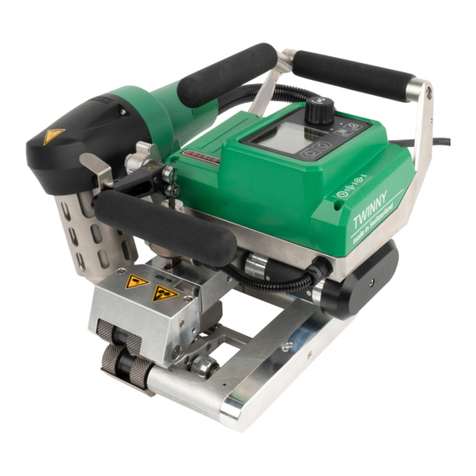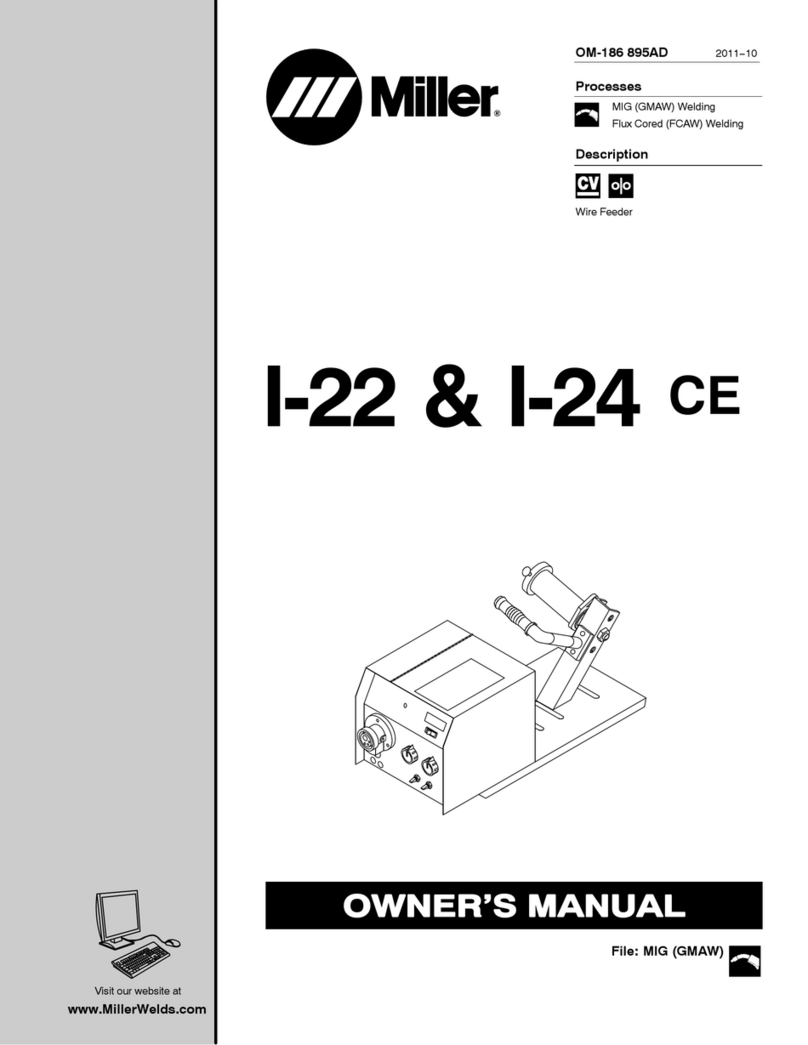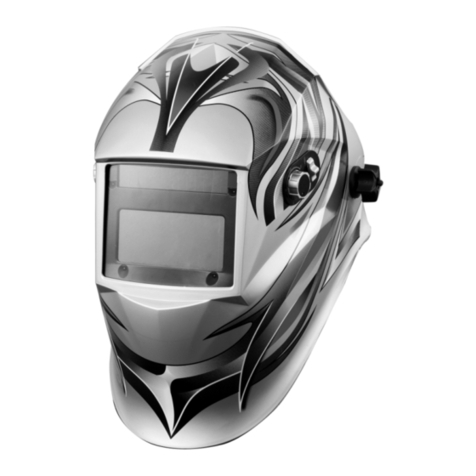
AVERTISSEMENT
AVERTISSEMENT
Le masque de soudeur photochromique protège les yeux et le visage contre les étincelles,
les éclaboussures et les rayons nocifs dans des conditions de soudage normales. Sa lentille
photochromique automatiquement de l’état clair à l’état sombre lorsque vous amorcez un arc
et revient à l’état clair lorsque vous arrêtez de souder.
Le masque de soudeur photochromique est prêt à utiliser dès l’achat. Avant de commencer à
souder, vous n’avez qu’à ajuster la position du serre-tête et à choisir le numéro de teinte qui
convient au travail à effectuer.
• Ce masque de soudeur photochromique n’est pas conçu pour le soudage au laser ni pour
le soudage et le coupage oxyacétylénique.
• Ne posez jamais ce masque ni sa lentille photochromique sur une surface très chaude.
• Ne tentez jamais d'ouvrir ou d’altérer la lentille photochromique.
• Ce masque ne protège pas contre les engins explosifs ou les liquides corrosifs.
• N’apportez aucune modication à la lentille ni au masque, à moins que le présent guide
indique de le faire. N’utilisez aucune pièce de rechange autre que celles mentionnées dans
le présent guide. Les modications et l’utilisation de pièces de rechange non approuvées
annuleront la garantie et exposeront l’utilisateur à des risques de blessures.
• Si le masque ne s’assombrit pas dès l’amorçage d’un arc, arrêtez de souder
immédiatement et communiquez avec votre superviseur ou votre détaillant.
• N’immergez pas la lentille.
• N’appliquez aucun solvant sur la lentille ou les composants du masque.
• Utilisez le masque uniquement à des températures de -10 °C à 55 °C (14 °F à 131 °F).
• Température de rangement : -20 °C à 70 °C (-4 °F à 158 °F). Lorsque vous n’utiliserez
pas le masque pendant une longue période, vous devriez le ranger dans un endroit sec,
frais et sombre et en retirer la pile.
• Évitez que la lentille entre en contact avec les liquides et la saleté.
• Nettoyez régulièrement la surface de la lentille; n’utilisez aucune solution nettoyante
puissante. Nettoyez toujours les détecteurs et les piles solaires à l’aide d’un linge non
pelucheux propre.
• Remplacez immédiatement la lentille de protection avant si elle est ssurée, égratignée ou piquée.
• Ne tentez jamais d’ouvrir la cartouche ltrante.
• Dans certains cas, les matériaux qui entrent en contact avec la peau de l’utilisateur
peuvent causer des réactions allergiques.
• Veuillez insérer 2 piles alcalines AAA avant d’utiliser cet article.
• Si vous prévoyez ne pas utiliser le masque pendant une longue période, retirez-en les
piles an d’éviter de l’endommager.
Lisez attentivement toutes les instructions avant d’utiliser le masque
Masque de soudeur
de qualité professionnelle
CONSIGNES DE SÉCURITÉ – À LIRE AVANT D’UTILISER
